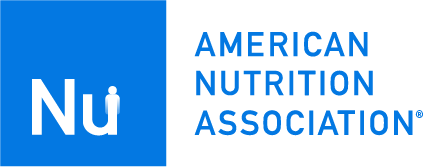Domains and Content Items 2024-2028
Domain I: Principles of Nutrition (13% of exam)
Practical application of evidenced based research
Physiology of the digestive tract (motility, absorption, secretion, intestinal barrier function)
Digestion, absorption, and transport of macronutrients and micronutrients
Inflammatory pathways including insulin, oxidative stress, and fatty acid oxidation
Effect of microbiome on metabolism of macronutrients and micronutrients, including use of probiotics and prebiotics
Nutritional considerations related to physiologic changes associated with life cycle stage
Effect of microbiome on body composition and metabolism
Tailoring of assessment and therapy specific to life cycle stage
Nutritional considerations related to psychological and social factors associated with life cycle stage
Effects of age, gender, and physical activity on body composition and energy expenditure
Disease risk and prevalence related to socioeconomic status, geographic residency, ethnicity, and life cycle stage
Regulation of fluid, electrolyte, and acid-base balance
Basic understanding of nutritional genomics research in practice
Calculation of individual caloric requirements
Estimation of caloric values of specific meals
Domain II: Nutritional Biochemistry (12% of exam)
Nutritional considerations related to psychological and social factors associated with life cycle stage
Metabolism (biochemical pathways and reactions) of carbohydrates, lipids, proteins, and micronutrients
Physiologic changes associated with life cycle stage
Role of oxidative stress and detoxification pathways on health status
Nutritional biochemical pathways including energy production and detoxification
Genomics research in practice
Chemistry of enzymes, co-factors and organic acids
Lipid metabolism, including cytokine and eicosanoid pathways
Epigenetics: methyl donor biochemistry and hypo and hyper methylation specific to life cycle stage
Domain III: Nutrients & Human Health (13% of exam)
Macronutrient and micronutrient food sources and impact on health
Nutrient deficiency and insufficiency: causes, symptoms, and treatment
Appropriate use of nutrient supplementation
Supplemental sources of nutrients
Functional and medical foods and their impact on health
Role of oxidative stress and detoxification pathways on health status
Structure and function of soluble and insoluble fiber and impacts on health
Role of key phytochemicals and zoochemicals in health
Chemistry of enzymes, co-factors and organic acids
Impact of agricultural methods and food processing, preparation, and storage on nutrient value
Tolerable upper intake levels of nutrients
Nutrient toxicity: causes, symptoms, and treatment
Dietary Guidelines and Dietary Reference Intakes for preventive and therapeutic interventions
Nutrients used in fortification and applicable food sources
Domain IV: Nutrition Assessment (13% of exam)
Lifestyle factors which impact nutrient needs and compliance such as exercise, stress, and sleep
Comprehensive medical nutrition health history
Use of behavior change strategies such as Motivational Interviewing and Stages of Change Theory
Evaluation of laboratory data including identification of optimal value ranges
Identify signs and symptoms of nutrient status
Identification of symptoms that require medical referral
Evaluation of functional testing (organic acid, stool, and saliva tests for adrenals and hormones)
Evaluation of hormonal and neurotransmitter imbalances based on laboratory assessment
Computerized analysis of food intake
Body composition analysis (skin fold, bioelectrical impedance, waist-to-hip, BMI, other)
Assessment of single nucleotide polymorphisms (SNPs)
Nutritional inborn errors of metabolism
Domain V: Clinical Intervention & Monitoring (16% of exam)
Gauging and optimizing client compliance
Consideration of client’s personal and cultural beliefs when developing nutrition intervention plans
Malabsorption and effects on macronutrients and micronutrient status
Effectiveness and contraindications of various diets
Drug/herb action, duration of action, purpose and dose of a client’s current therapeutic regimen
Interactions between drugs and foods, alcohol, vitamins, minerals, herbs, phytochemicals, and zoochemicals
Nutrient depletions related to commonly used drugs
Evidence-based dose and duration of nutraceutical use for common conditions
Evidence-based use of common botanical supplements for health promotion and common conditions
Synergistic effects and antagonistic interactions of nutrients in foods and supplements
Effects of disordered eating patterns on nutrition status, body composition, and body functions
Safety, toxicity, and interactions of botanical supplements
Good manufacturing practices and other quality markers for nutritional supplements
Application of national guidelines, policies, consensus recommendations, and evidence-based research in the development of personalized therapeutic interventions
Linking childhood behaviors to obesity and other chronic health issues in adults
Impact of nutritional genomics on health
Domain VI: Medical Nutrition Therapy (MNT) (15% of exam)
MNT for gastrointestinal disorders
MNT for food allergies and intolerances
MNT for autoimmune disorders
MNT for mental health/mood disorders
MNT for insulin resistance and type 2 diabetes
MNT for cardiovascular disease, dyslipidemias, and hypertension
MNT for endocrine disorders
MNT for obesity
MNT for cognitive and neurodegenerative disorders
MNT for hepatic disorders
MNT for neurodivergence
MNT for dermatological disorders
MNT for bone disorders
MNT for type 1 diabetes
MNT for cancer
MNT for renal disorders
MNT for hematologic disorders
MNT for mastication, swallowing, and nutrient absorption disorders
MNT for pulmonary disorders
MNT for surgical procedures
MNT for communicable diseases and sequalae
MNT for bariatric surgery
Domain VII: Public Health (12% of exam)
Impact of environmental toxicity on health
Translation of nutritional epidemiology into practice
Factors that negatively affect food quality and safety
Causes and preventative measures for common foodborne illnesses
Identification of populations at risk for food safety issues
Tracking current outbreaks of food borne illness and communication with clients
Domain VIII: Practice Management (6% of exam)
Compliance with ethical standards
Working within scope of practice and in collaboration with other healthcare professionals as needed
Evaluate sources of nutrition information for trustworthiness and bias
HIPAA compliance requirements
Licensure and certification
Cultural competency and mitigating implicit bias
Insurance coverage and reimbursement
This CNS Exam Content Outline will take effect in 2024 beginning with the June 2024 exam
Updated: 12/14/2023
